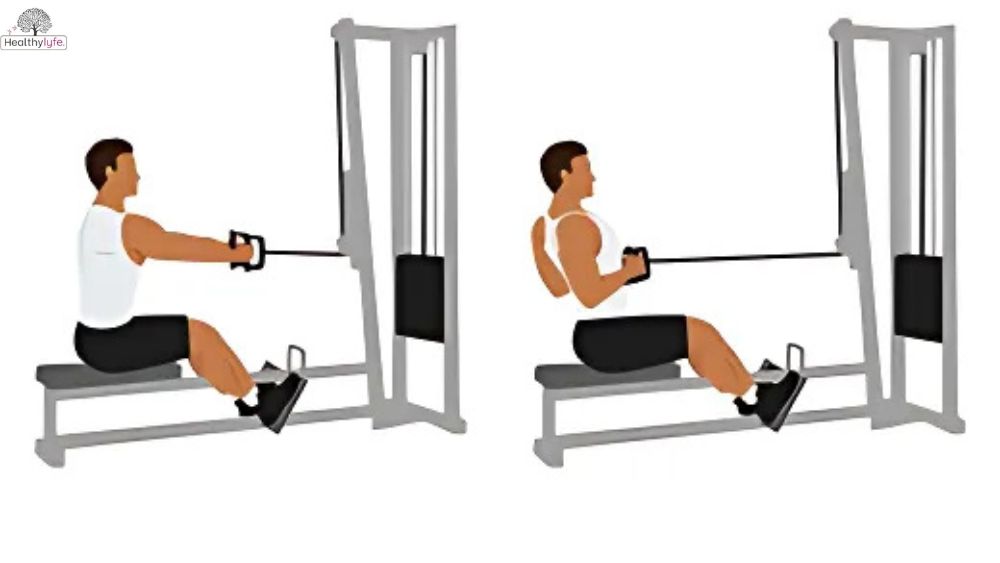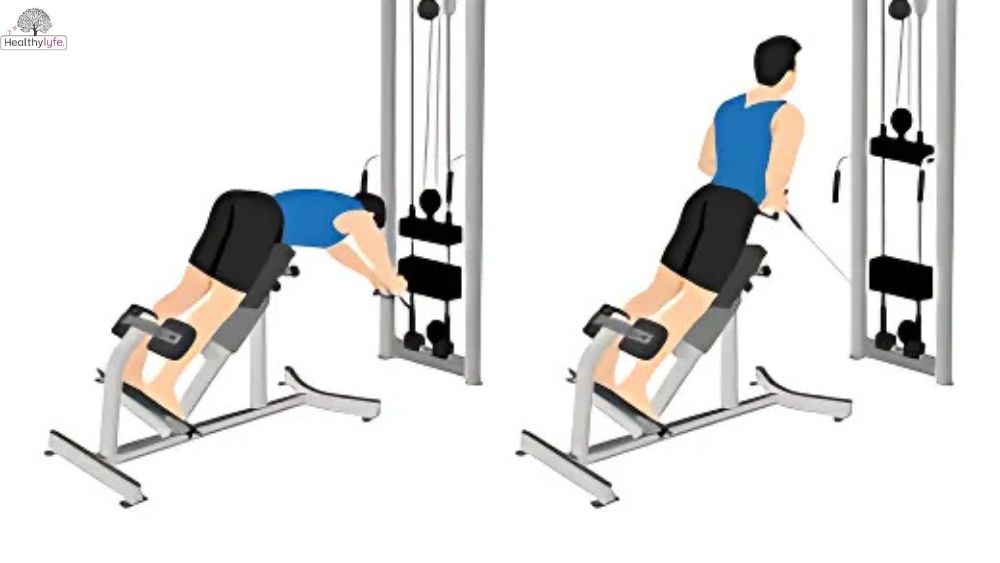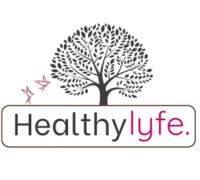Plate Loaded High Row Exercise: Benefits, Diet Plan, and Tips
Plate loaded high row is the best exercise for building a strong back. Learn its benefits, proper form, and common mistakes to avoid for better muscle growth.
Introduction
The plate loaded high row is a great exercise for building a strong and well-defined back. It targets the lats, rhomboids, traps, and rear delts, making it a popular choice for strength training and bodybuilding.
This machine-based exercise provides controlled movement, helping you focus on your muscles while reducing strain on your joints. Whether you want to gain strength, improve posture, or build muscle, the plate loaded high row is a great addition to your workout.
What is Plate Loaded High Row?
The plate loaded high row is a strength training exercise that targets the upper and middle back muscles, including the lats, rhomboids, traps, and rear delts. It is performed on a plate-loaded machine, allowing for controlled movement and a full range of motion. This exercise helps improve back strength, posture, and muscle definition, making it a great addition to any workout routine.
How to Do the Plate Loaded High Row

- Set Up the Machine – Adjust the seat height so your chest rests comfortably against the pad, and your hands can reach the handles with a slight bend in your arms. Load the desired weight on the machine.
- Grip the Handles – Grab the handles with a neutral or overhand grip, keeping your chest pressed against the pad and your back straight.
- Pull the Handles – Engage your back muscles and pull the handles toward your body, squeezing your shoulder blades together at the end of the movement.
- Control the Return – Slowly extend your arms back to the starting position, maintaining control to avoid sudden movements.
- Repeat – Perform the desired number of repetitions while keeping proper form.
Benefits of Plate Loaded High Row Exercise [1]
The plate-loaded high row is a great exercise for building a strong and muscular upper back. This machine-based movement mimics a rowing motion and targets the latissimus dorsi, trapezius, rhomboids, and rear deltoids. It is commonly used by athletes, bodybuilders, and fitness enthusiasts to improve back strength, posture, and overall pulling power.
Builds a Strong and Defined Back
This exercise directly engages the upper back muscles, helping to develop a wider, thicker, and more powerful back. Strong lats and traps contribute to a well-shaped upper body.
Improves Posture and Shoulder Health
A strong upper back supports better posture by keeping the shoulders pulled back and preventing slouching. It also helps reduce the risk of shoulder injuries by strengthening stabilizer muscles.
Safer Alternative to Free Weights
Unlike barbell or dumbbell rows, the plate-loaded machine provides a guided movement, reducing the chance of improper form or injury. It’s an excellent option for those recovering from injuries or with limited mobility.
Customizable Resistance for All Fitness Levels
The weight plates can be adjusted to match any strength level. This allows both beginners and advanced lifters to progress at their own pace.
Better Muscle Isolation
The machine design eliminates momentum, forcing the back muscles to do the work. This improves muscle activation and leads to better strength and muscle growth over time.
Helps Fix Muscle Imbalances
Many plate-loaded machines allow one-arm training, which helps correct strength imbalances between the left and right sides of the back.
Enhances Athletic Performance and Functional Strength
The pulling motion of the high row mimics movements used in sports, martial arts, and daily activities. This improves grip strength, pulling power, and overall athletic performance.
Diet Plan for Plate Loaded High Row Exercise
A well-balanced diet is essential for muscle growth, strength, and recovery when performing the plate-loaded high row exercise. Proper nutrition helps fuel workouts, repair muscles, and improve overall performance. A diet rich in protein, complex carbs, and healthy fats ensures better results.
Below is a simple diet plan to support strength training and recovery:
Meal Plan for Strength & Muscle Growth
| Meal | Food Options | Benefits |
|---|---|---|
| Pre-Workout (30-60 min before) | Oatmeal with banana and peanut butter OR Whole wheat toast with eggs | Provides energy and protein for muscle support. |
| Post-Workout (Within 30 min) | Grilled chicken with brown rice and vegetables OR Protein shake with banana and almond butter | Helps muscle recovery and glycogen replenishment. |
| Breakfast | Scrambled eggs with spinach and toast OR Greek yogurt with granola and berries | Supplies protein, fiber, and nutrients for muscle maintenance. |
| Lunch | Grilled salmon with quinoa and vegetables OR Lean beef with sweet potatoes | Packed with protein, healthy fats, and carbs for strength. |
| Snack | Cottage cheese with almonds and honey OR Protein smoothie with whey and fruits | Provides a protein boost for muscle repair. |
| Dinner | Baked chicken with brown rice and broccoli OR Lentil soup with whole-grain bread | Supports muscle recovery overnight. |
| Hydration | Water, coconut water, green tea | Keeps muscles hydrated and aids recovery. |
Important Tips
- Protein Intake: Consume 1.2 to 2.0g per kg of body weight daily.
- Carbs for Energy: Eat oats, brown rice, and quinoa to sustain strength.
- Healthy Fats: Include avocados, nuts, and olive oil for joint health.
- Hydration: Drink at least 2-3 liters of water per day.
- Meal Timing: Eat every 3-4 hours for steady energy and muscle repair.
Tips for Success in the Plate-Loaded High Row Exercise
The plate-loaded high row is a great exercise for building upper back strength, improving posture, and increasing muscle definition. It targets key muscles like the latissimus dorsi, trapezius, rhomboids, and rear deltoids, making it a valuable addition to any strength training routine.
To get the best results, it is important to use proper form, controlled movements, and the right technique. Whether you are a beginner or an advanced lifter, following key tips can help maximize performance, prevent injuries, and ensure steady progress.

Maintain Proper Form
- Keep your chest against the pad and your back straight to prevent strain.
- Avoid leaning too far back or hunching your shoulders.
- Engage your core and upper back muscles throughout the movement.
Control Your Reps
- Pull the handles slowly and with control, avoiding momentum.
- Lower the weight in a controlled manner to keep muscles engaged.
- Aim for 8-12 reps per set for muscle growth and endurance.
Focus on Mind-Muscle Connection
- Engage your lats, traps, and rhomboids as you pull.
- Squeeze your shoulder blades together at the top of the movement.
- A strong mind-muscle connection improves strength and muscle activation.
Adjust the Seat and Grip
- Set the seat height so the handles align with your lower chest.
- A wider grip targets more of the upper back, while a neutral grip focuses on mid-back muscles.
- Experiment with grip variations to activate different areas of the back.
Use the Right Weight
- Start with a moderate weight to perfect your form.
- Gradually increase weight while maintaining good technique.
- Avoid lifting too heavy, as this can reduce effectiveness and lead to injury.
Breathe Properly
- Inhale as you extend your arms and exhale as you pull the handles.
- Proper breathing improves stability and strength output.
- Don’t hold your breath—keep a steady rhythm.
Train with a Full Range of Motion
- Fully extend your arms before pulling to ensure maximum muscle activation.
- Avoid half-reps—using a full range builds strength more effectively.
- Focus on deep contractions to develop stronger, more defined muscles.
Keep a Steady Tempo
- Avoid rushing reps—slow and controlled movements give better results.
- A two-second pull and two-second release is ideal for strength building.
- Quality reps matter more than quantity.
Add Variations for Better Results
- Try single-arm rows to correct muscle imbalances.
- Experiment with different grips and angles to hit muscles differently.
- Adding variety prevents plateaus and keeps workouts engaging.
Prioritize Recovery and Nutrition
- Get enough rest between workouts to allow muscle recovery.
- Eat a protein-rich diet to support muscle growth.
- Stay hydrated to improve performance and prevent fatigue.
Common Mistakes to Avoid
The plate-loaded high row is an effective exercise for strengthening the upper back, improving posture, and building muscle definition. However, many people make common mistakes that reduce effectiveness and increase the risk of injury.
By understanding and avoiding these errors, you can get the most out of your workout and achieve better results. Here are some common mistakes to watch out for when performing the plate-loaded high row.
Using Too Much Weight
- Lifting too heavy can lead to poor form and increase the risk of injury.
- Focus on controlled movements instead of using momentum to lift the weight.
- Start with a moderate weight and gradually increase as you master the technique.
Relying on Momentum
- Swinging the weight or using jerky movements reduces muscle engagement.
- Perform each rep slowly and with control to fully activate the back muscles.
- Avoid pulling too fast and focus on a steady tempo.
Not Keeping the Chest Against the Pad
- Leaning too far back shifts the focus from the back to the arms and shoulders.
- Keep your chest in contact with the pad throughout the movement.
- Maintain a neutral spine to avoid unnecessary strain.
Improper Grip Placement
- Holding the handles too wide or too close can affect muscle activation.
- Adjust your grip based on the muscles you want to target.
- Wide grip focuses on the upper back.
- Neutral grip targets the mid-back.
- Keep a firm but comfortable grip to prevent wrist strain.
Shortening the Range of Motion
- Not fully extending or pulling the handles all the way reduces effectiveness.
- Use a full range of motion to maximize muscle activation.
- Fully extend your arms before pulling the weight towards you.
Shrugging the Shoulders
- Shrugging places stress on the traps instead of engaging the back muscles.
- Keep your shoulders down and relaxed throughout the movement.
- Focus on squeezing the shoulder blades together at the top.
Poor Breathing Technique
- Holding your breath or breathing incorrectly can limit performance.
- Inhale as you extend your arms and exhale as you pull the handles.
- Proper breathing improves strength and stability.
Rushing Through Reps
- Performing reps too quickly reduces muscle engagement and control.
- Slow and controlled movements provide better muscle activation.
- Aim for a 2-second pull and a 2-second release for each rep.
Ignoring Recovery and Overtraining
- Training too often without rest can lead to muscle fatigue and injury.
- Allow at least 48 hours of recovery before training the same muscle group again.
- Prioritize proper nutrition, hydration, and sleep for optimal recovery.
Conclusion
The plate-loaded high row is a highly effective exercise for building upper back strength, improving posture, and enhancing muscle definition. It targets key muscles like the latissimus dorsi, trapezius, and rhomboids, making it an essential movement in any strength training routine.
To maximize results, it is important to maintain proper form, use a controlled range of motion, and avoid common mistakes such as using too much weight or relying on momentum. Consistency, progressive overload, and proper recovery will help improve performance and prevent injuries.
FAQs About Plate-Loaded High Row Exercise
What is the plate-loaded high row exercise?
The plate-loaded high row is a machine-based exercise that mimics a rowing motion, targeting the upper and mid-back muscles, including the latissimus dorsi, rhomboids, traps, and rear delts.
What muscles does the plate-loaded high row target?
This exercise primarily works the lats, traps, rhomboids, and rear delts while also engaging the biceps and forearms as secondary muscles.
How does the plate-loaded high row differ from a seated cable row?
Unlike a seated cable row, the plate-loaded high row allows for a more natural range of motion, better muscle engagement, and independent arm movement, helping correct muscle imbalances.
Is the plate-loaded high row better than free-weight rows?
Both exercises are effective. The plate-loaded high row offers a controlled movement with less strain on the lower back, while barbell or dumbbell rows provide more overall body engagement.
Can beginners use the plate-loaded high row?
Yes! The machine provides stability and controlled movement, making it beginner-friendly while still allowing for progressive overload.
What grip should I use on the plate-loaded high row?
Overhand grip (pronated) – targets the upper back and rear delts.
Underhand grip (supinated) – emphasizes the lats and biceps.
Neutral grip (palms facing each other) – balances both muscle groups.
How much weight should I use on the plate-loaded high row?
Start with a moderate weight that allows for full range of motion while maintaining proper form. Gradually increase weight as strength improves.
How many sets and reps should I do?
For hypertrophy (muscle growth) – 3-4 sets of 8-12 reps.
For strength – 4-5 sets of 4-6 reps.
For endurance – 3-4 sets of 12-15 reps.
Should I lean forward or stay upright during the high row?
Keep a slight forward lean to engage the back fully, but avoid excessive bending, which can cause strain on the lower back.
Can the plate-loaded high row improve posture?
Yes! Strengthening the upper and mid-back helps counteract poor posture, especially for those who sit for long hours.
What is the best way to incorporate the high row into my workout?
Use it as a primary back exercise or a supplementary movement after compound lifts like deadlifts, pull-ups, or barbell rows.
What are common mistakes in the plate-loaded high row?
Using excessive weight – leading to poor form.
Not pulling through the elbows – reducing lat activation.
Short range of motion – not getting a full contraction.
Can I do the plate-loaded high row if I have lower back pain?
Yes! Since the machine supports the torso, it reduces stress on the lower back, making it safer than free-weight rowing for people with lower back issues.
What are some alternatives to the plate-loaded high row?
If a plate-loaded machine isn’t available, try:
Seated cable rows
Bent-over barbell rows
T-bar rows
Single-arm dumbbell rows
How often should I do the plate-loaded high row?
Include it in your back workout 1-2 times per week, depending on your training split and overall recovery.
Disclaimer: The information provided in this article is for general informational purposes only and is not intended as medical advice. Always consult with a healthcare professional or certified fitness trainer before starting any new exercise.
By healthylyfe


